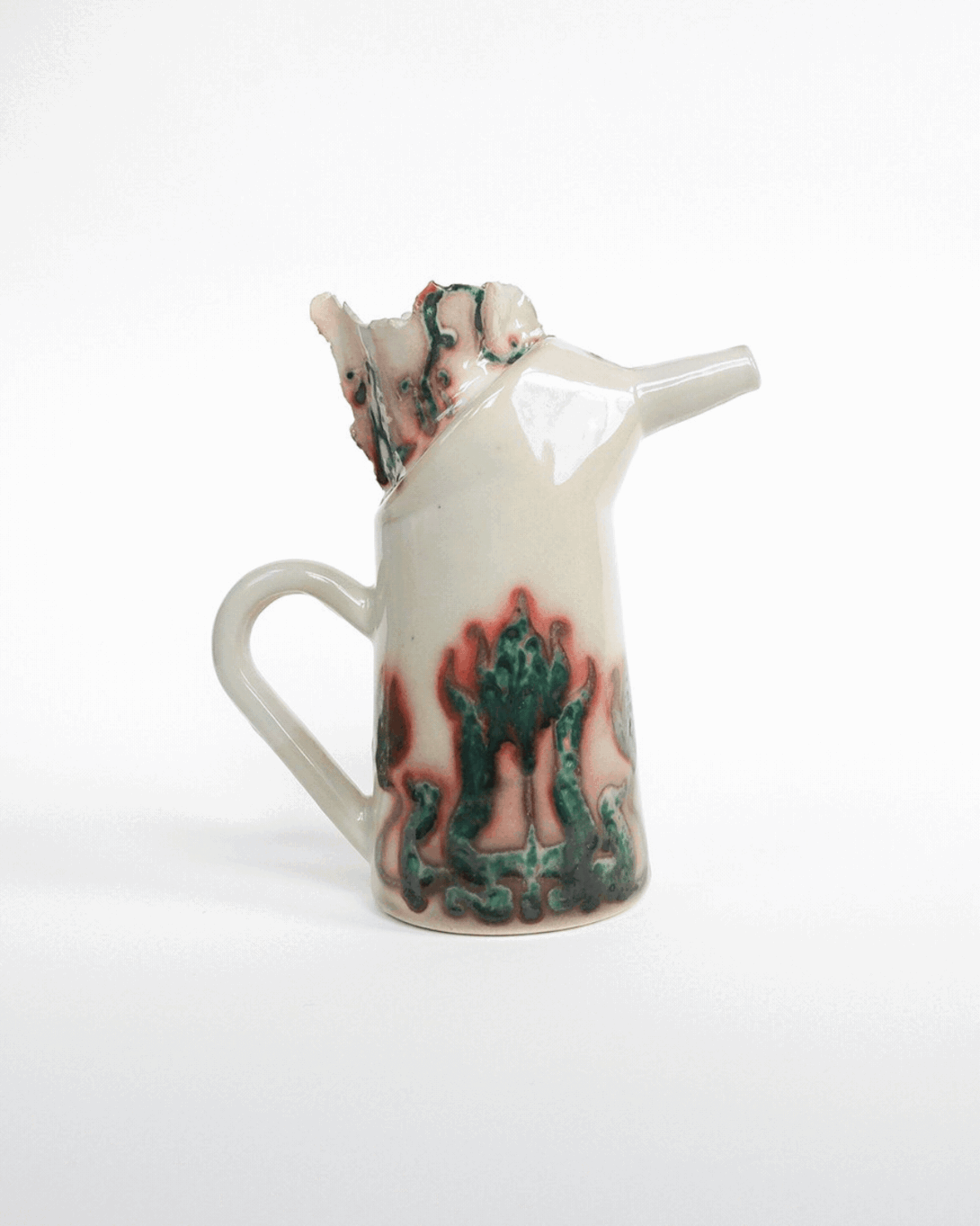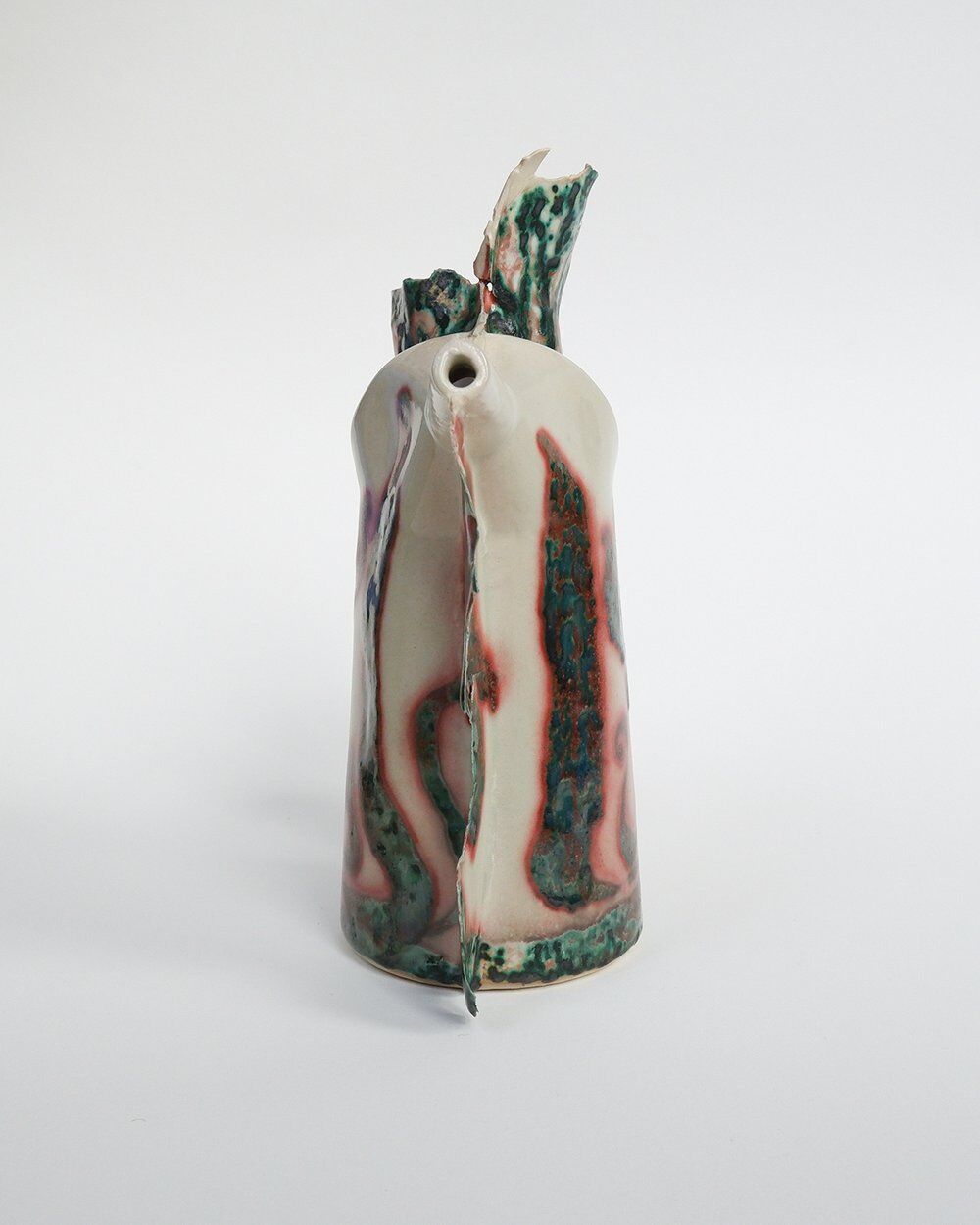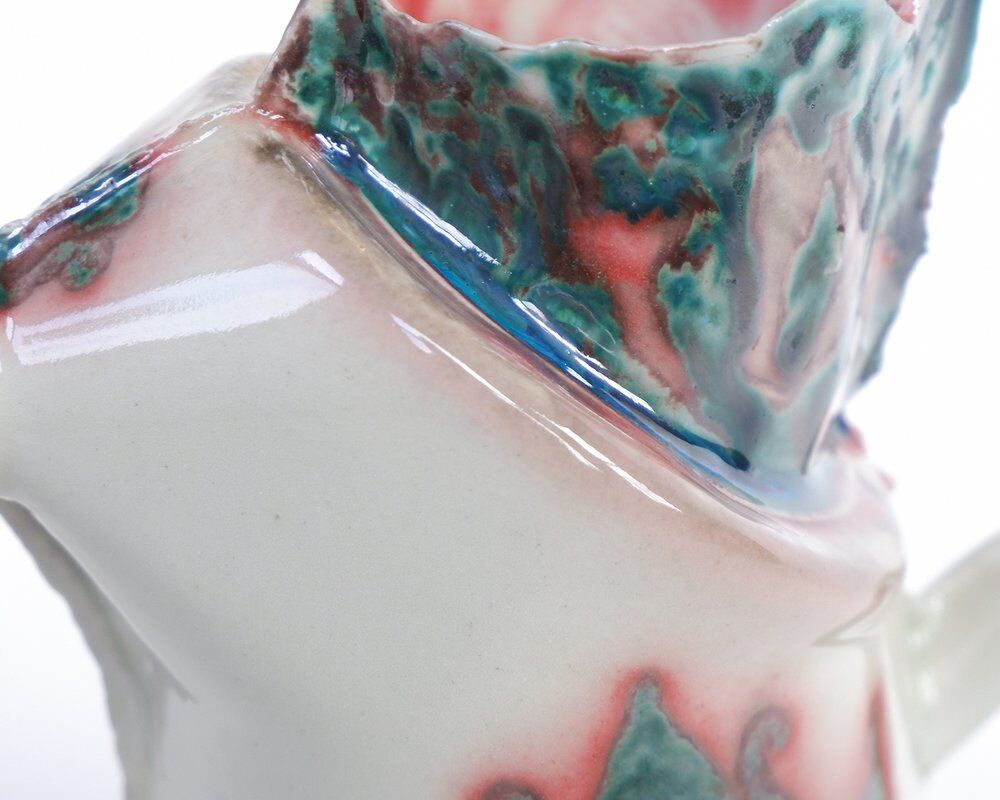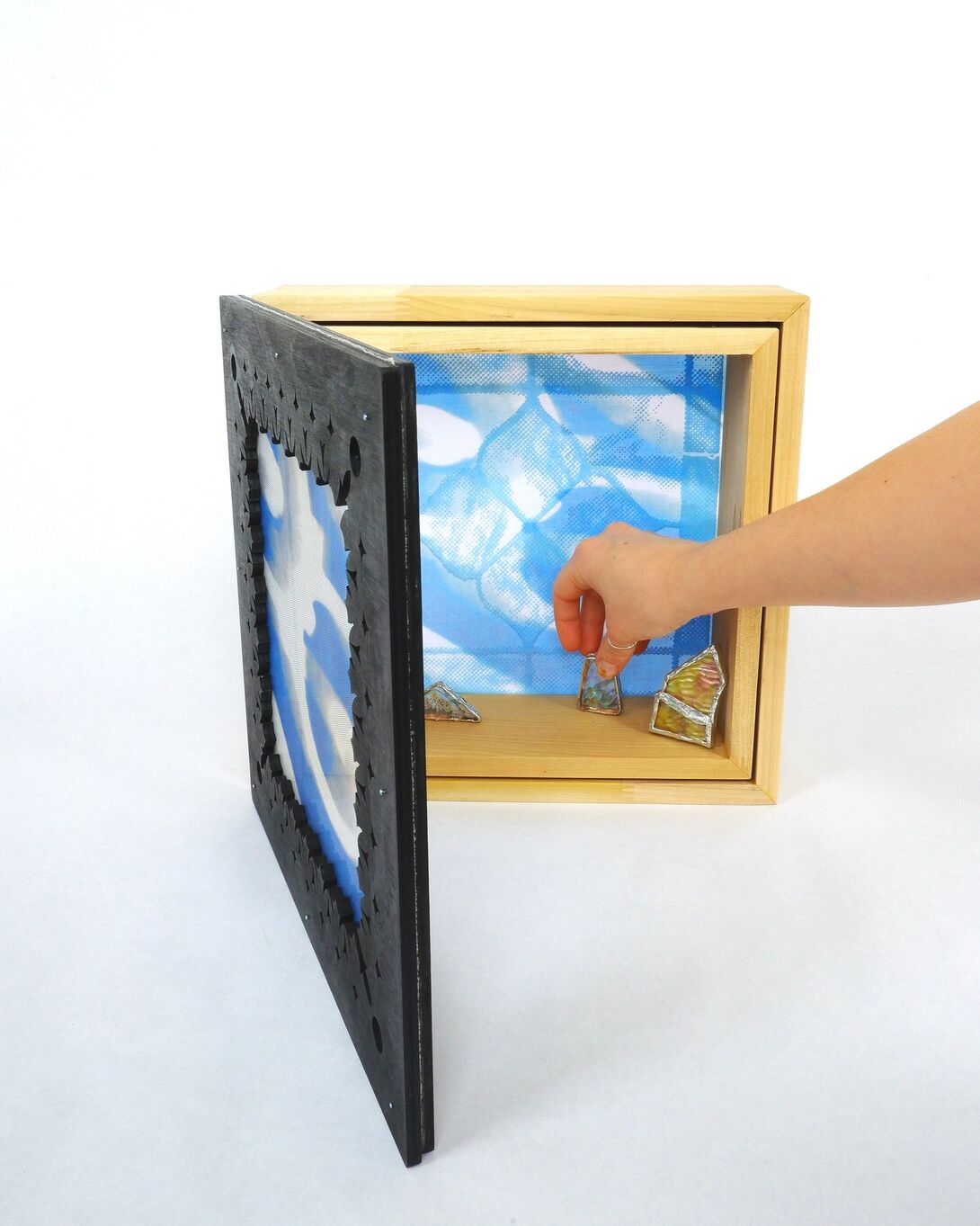
Images Courtesy of Thalya Jouin
How It’s Made: Crafting Present Archaeology with Artist Thalya Jouin
In the creative world of School of the Art Institute of Chicago (SAIC) undergraduate student Thalya Jouin, boundaries blur between traditional craft and mass production processes. Her series Present Archaeology invites viewers into a world where everyday artifacts become symbols of profound beauty. Jouin's artistic journey is a harmonious blend of tradition and innovation—a testament to the enduring allure of craftsmanship in the modern age.

Images Courtesy of the Artist
Jouin's recent series, Present Archaeology, initially emerged from a mold-making accident during a ceramics project. It explores the cultural significance around mass-produced objects. Using a process of transformation and replication through repeated pouring and casting, Jouin creates beauty in mundane objects like a funnel cake pitcher and turns them into the focal points of her work.
Central to Jouin's artistic philosophy is the concept of relics—objects that capture and preserve fleeting moments or cultural markers.
"A relic to me is like a bookmark in time, an object that sanctifies the process of creation" said Jouin.
This perspective informs her diverse practice, where she integrates mediums like stained glass, weaving, ceramics, and digital fabrication to elevate everyday materials into artifacts of contemporary significance.

Image Courtesy of the Artist
Present Archaeology explores the beauty of the mundane. Jouin said that each successive piece is an exploration of the mold line, which she calls the “unwanted byproduct of the injection molding process"
"I am aiming to turn the mold line into an ornamental element. Mold lines have become so common on factory-made plastic objects that they go unnoticed," she said. "By drawing attention to the mold line, I am drawing attention to our disconnect with the fabrication methods of the objects we buy.” Her meticulous process of breaking and sanding down molds to exaggerate flaws not only enhances the visual narrative but also underscores her commitment to challenging perceptions of perfection in art.

Image Courtesy of Thalya Jouin
Jouin's artistic sensibilities are deeply influenced by her upbringing in France in an art-centric family. She cites Gothic architecture and stained glass as enduring inspirations. “I was very lucky to grow up in an art family where I have a curator-art historian mom who would get really excited about taking us to visit churches,” said Jouin. “I feel like that really shaped my visual language now.” Her father's passion for design and craftsmanship molded her commitment to craft traditions—a legacy she seeks to continue in her own work. “He loves to talk about how I come from this long legacy of French woodworkers.”

Image Courtesy of Thalya Jouin
At SAIC, although she is approaching everything with a multidisciplinary edge, her academic home is in the Fiber and Material Studies department.
“The openness of the curriculum has really done wonders for me. I kind of came into this school as more of a painter, image person,” said Jouin. “The ability to go between mediums and take pretty much any class allowed me to explore a bunch of other things like the Fibers department, Ceramics, the wood shop.”
When asked about her affinity for fiber art, Jouin traces her journey from printmaking to weaving. "The way colors interact in fiber art is truly exciting," she said. Beyond aesthetics, Jouin appreciates the “malleability of cloth, which allows for sculptural approaches” and “blends functionality with decorative appeal."
While seamlessly integrating various mediums, Jouin maintains a cohesive aesthetic thread characterized by meticulous use of color and recurring motifs. “When I do have a lot of things going on, I feel like what really ties it together is the use of color and repeated images throughout,” said Jouin.“I’ll reuse a lot of similar motifs throughout one piece that has a lot of factors in it or I have a very specific color palette that I unintentionally stick to.”

Images Courtesy of Thalya Jouin
Whether experimenting with jacquard weaving or exploring the stained glass's imperfect beauty through transparent screen prints that catch a shadow of a moment in time, she creates multifaceted pieces that invite contemplation.
Jouin's work has been exhibited at venues like Comfort Station in Chicago's Logan Square, and she appreciates the opportunity to engage with diverse audiences beyond the academic realm. Next in her assembly line of sight? Toolkits. As she approaches her BFA show, Jouin has become intrigued by the gendering of and disconnect between tools, aesthetics, and process. She plans to take a hammer to those expectations and create something new.
